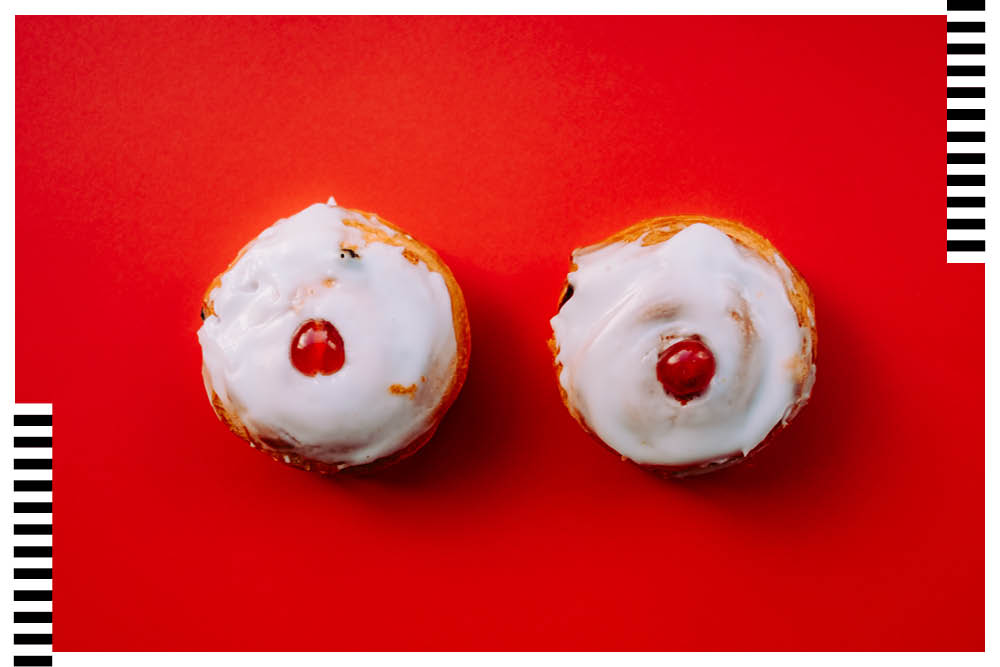Your essential guide to breast self-examination

We squash them into ill-fitting bras, let them hang free, let them sag, and pull them in tight for special occasions. Everyone’s got a different pair, and whether they look more like sisters than twins, we appreciate them.
But as much as we appreciate our breasts, there are a variety of health factors that can affect them, ranging from mildly harmless to medically serious. One of the most concerning illnesses, breast cancer, gets a lot of coverage–but do you know how to check your breasts for those concerning lumps and bumps?
In nearly 80 per cent of cases, women found their breast cancer by themselves before going to a doctor for a diagnosis. While routine screenings at the gynaecologist are helpful, it’s important to be checking your breasts monthly at home.
People of any gender can get breast cancer, although it’s much rarer in cisgender men and women under 45. Its most common form develops in the milk ducts (the tubes that carry milk to the nipple), although it can start in the lobules (the milk-producing glands).
HOW DO I CHECK MY BREASTS?
There are many ways to check your breasts, including in the shower, whilst laying down or even in the mirror–whatever’s most convenient and comfortable for you. Aim to check once a month, and keep track of any particular lumps to learn what’s normal for your unique body.
If you check in the shower, move the pads of your fingers around your breast, moving from the outside to the centre in a circular motion. A bit of soap can act as lubrication, so if you have particularly thick breast tissue, this method might be the easiest option.
If you prefer to check while lying down, you’ll notice that the breast tissue spreads out against the chest wall. For comfort, place a pillow under your shoulder and follow the same circular motion that you would in the shower. If any discharge comes out when you squeeze your nipple, make a note of the colour.
If you check in front of the mirror, pay attention to the contour of your breasts and any changes in skin texture. By flexing your chest muscles, you’ll be able to see any puckering or dimpling in the skin–both tell-tale signs of breast cancer.
With all these methods, be sure to check under your armpits and up to your collarbone. Breast tissue goes beyond your breasts, so it’s important to check these additional areas, where it might be easier to feel a potential problem.
HOW SHOULD MY BREASTS LOOK?
Breast tissue can change due to age, hormones and weight fluctuations, so it’s important to pay attention to how your breasts usually look. Since breast tissue is fibrous and thick, it’s normal to have a few lumps. Make a mental note of where they are and their general size, so you’ll be able to know if there’s a major change.
If you do notice something unusual, stay calm. Breast cancer charity CoppaFeel recommends monitoring the symptoms, and if it hasn’t gone away after a week, make an appointment with your GP.
AM I TOO YOUNG TO WORRY ABOUT BREAST CANCER?
If you’re under 45, it’s less likely that your lump or bump is breast cancer, but it’s important to always visit your GP when new symptoms arise. Symptoms like nipple discharge and breast growth can be completely benign, but they also can be a sign of something serious.
Unfortunately, CoppaFeel reported that only one-third of women would “immediately visit their doctor upon discovering early signs and symptoms.” As breast cancer is the most commonly diagnosed cancer in women under 40, according to Breast Cancer Care, women need to start taking their breast health seriously.
I FOUND A LUMP, WHAT DO I DO?
If you notice a change in your breast tissue, call your GP and schedule an appointment. They’ll feel your breasts, and refer you further if necessary.
The most important thing to do is to stay calm. Avoid Googling all your symptoms, remember that not all lumps are indicative of cancer, and you’re doing the right thing by checking your symptoms with a qualified doctor. If you’re finding it difficult to deal with the waiting period, Breast Cancer Care offers a helpline, general support via e-mail from nurses, and a catalogue of region-specific support services that you can utilise.












